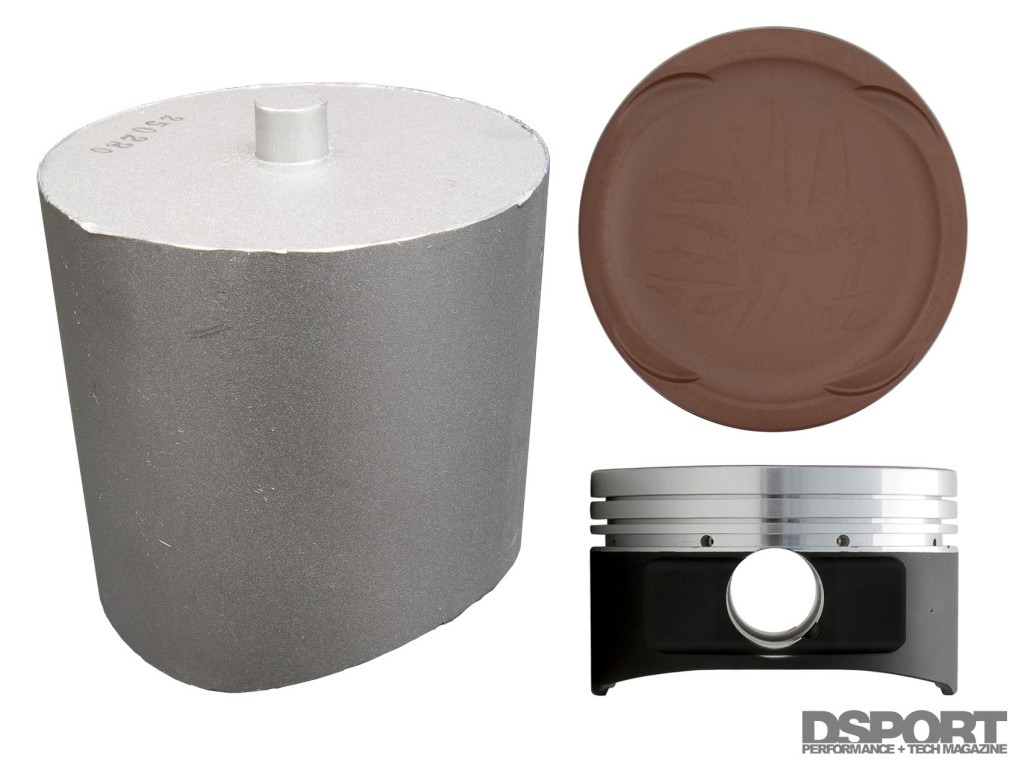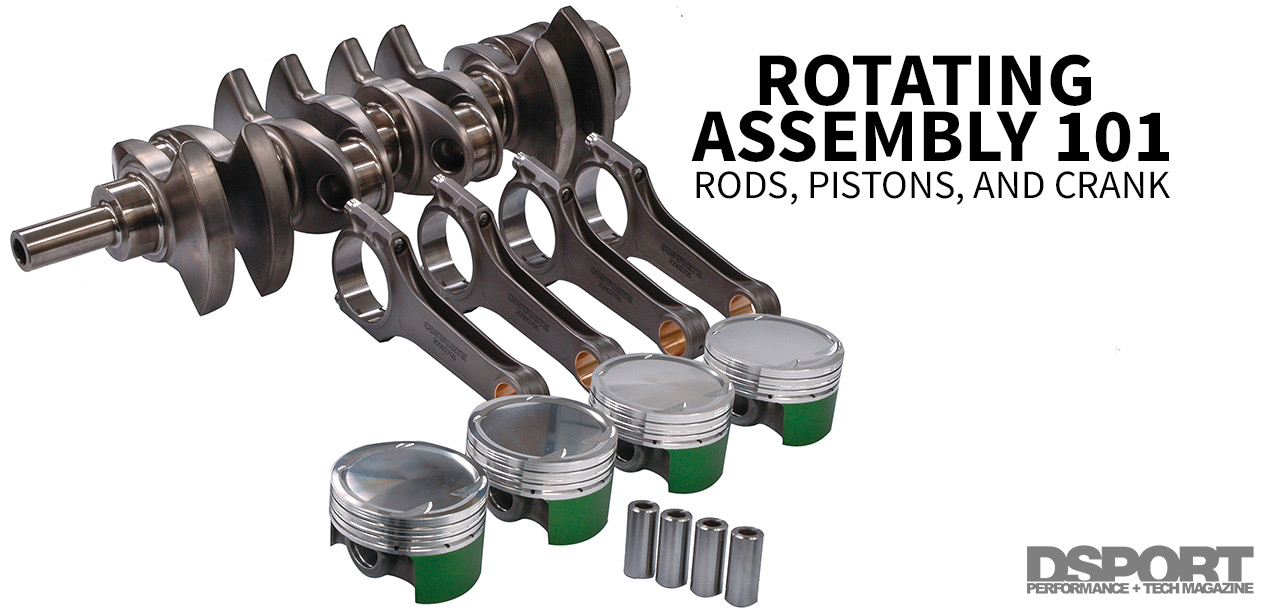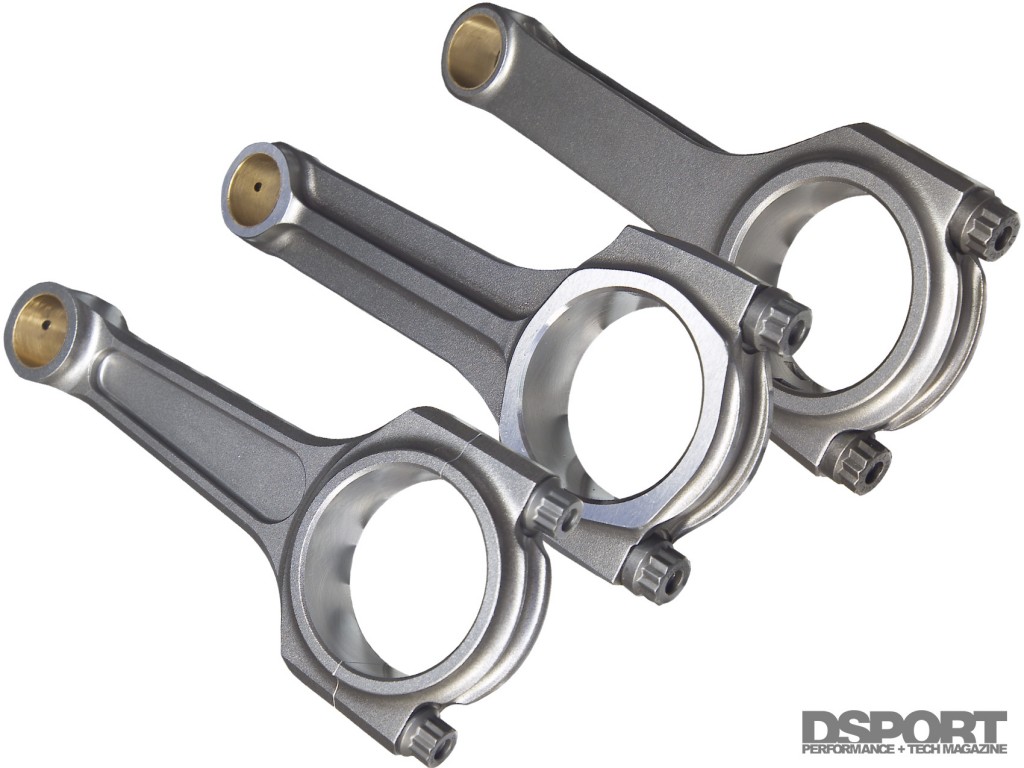4032 vs. 2618 Aluminum Alloy
The majority of high-performance forged pistons are either made from a 4032 (approximately 11-percent silicon) or a 2618 (less than 2-percent silicon) aluminum alloy. The 4032 alloy is an extremely popular forging alloy used by many piston manufacturers. The thermal expansion of the 4032 is approximately 15 percent less than that of the 2618 alloy, allowing for tighter initial clearances (piston-to-wall). The tighter initial clearances result in a quieter engine during cold starts. The 4032 alloy is a great material for street/strip applications.
The 2618 alloy pistons are designed for racing and extreme output engine applications. The 2618 alloy is a stronger forging, allowing piston manufacturers to perform additional internal milling to further reduce weight. The less-than-2-percent silicon content 2618 alloy is likely to produce more noise (piston slap) on initial cold starts. This is due to the 2618 alloy’s tendency to expand when exposed to engine combustion temperatures. The 2618 alloy has a higher tensile strength, when compared to the 4032 alloy.
Forging versus Billet Pistons
While 99-percent of all aftermarket high-performance pistons are machined from forgings, billet pistons have been making the news in the past two years. Both forgings and billets have their advantages. A forging has superior grain flow giving it additional strength for its weight. Billet pistons do not depend on the design restraints of a forging and can be made to be stronger in critical areas that might fail in a particular forging. Whereas every piston forging has its dimensional limits, a piston made from a billet can be designed and machined to have thicker and stronger areas that may not be available in the available forgings to the aftermarket. Hence, the main advantage with a billet piston is having less design constraints. Ultimately, the design elements found to work in a certain billet piston can trickle down to a revised forging for that family of pistons in the future. When there are no forgings available to make a piston to meet the design requirements of a particular engine build, a custom billet can get it done.
 The custom-made pistons for DSPORT’s Project SR23 were CNC-machined from a forged billet of aluminum.
The custom-made pistons for DSPORT’s Project SR23 were CNC-machined from a forged billet of aluminum.
Connecting Rod Options
Nearly all high-performance connecting rods are manufactured from high- strength 4340 steel. Some manufacturers also offer titanium rods which provide significant weight savings, but will make a serious dent in the wallet. Aluminum rods are considerably bulkier in size and have a limited lifespan due to stretching. However, they can be lighter than steel.
All high-performance steel connecting rods are manufactured from either a billet or a forging. A billet is just a solid piece of material while a forging is a roughly-shaped blank of the part that undergoes the forging process to have its final shape. Many engine builders prefer to use forgings when available as they believe that there is additional strength due to flow of the grain in the forging. The bottom line is that either a forged or a billet connecting rod can do everything you need it to do for your application. You just need to communicate with your connecting rod retailer or manufacturer regarding the power and RPM that your combination will realize.
A-beam, H-beam, I-beam or X-beam. Different rod manufacturers offer different beam designs in their rods. Each design has its merit, but ultimately all can work well in any application as long as the correct connecting rod is selected.
Connecting rod weight will vary based on the manufacturer, beam style and the use for which the rod was designed. For the same family of engine, a manufacturer may offer a lightweight and a standard weight connecting rod. The lightweight rod will generally be intended for lower horsepower applications while the standard or heavy-duty rod will be for higher horsepower applications.




